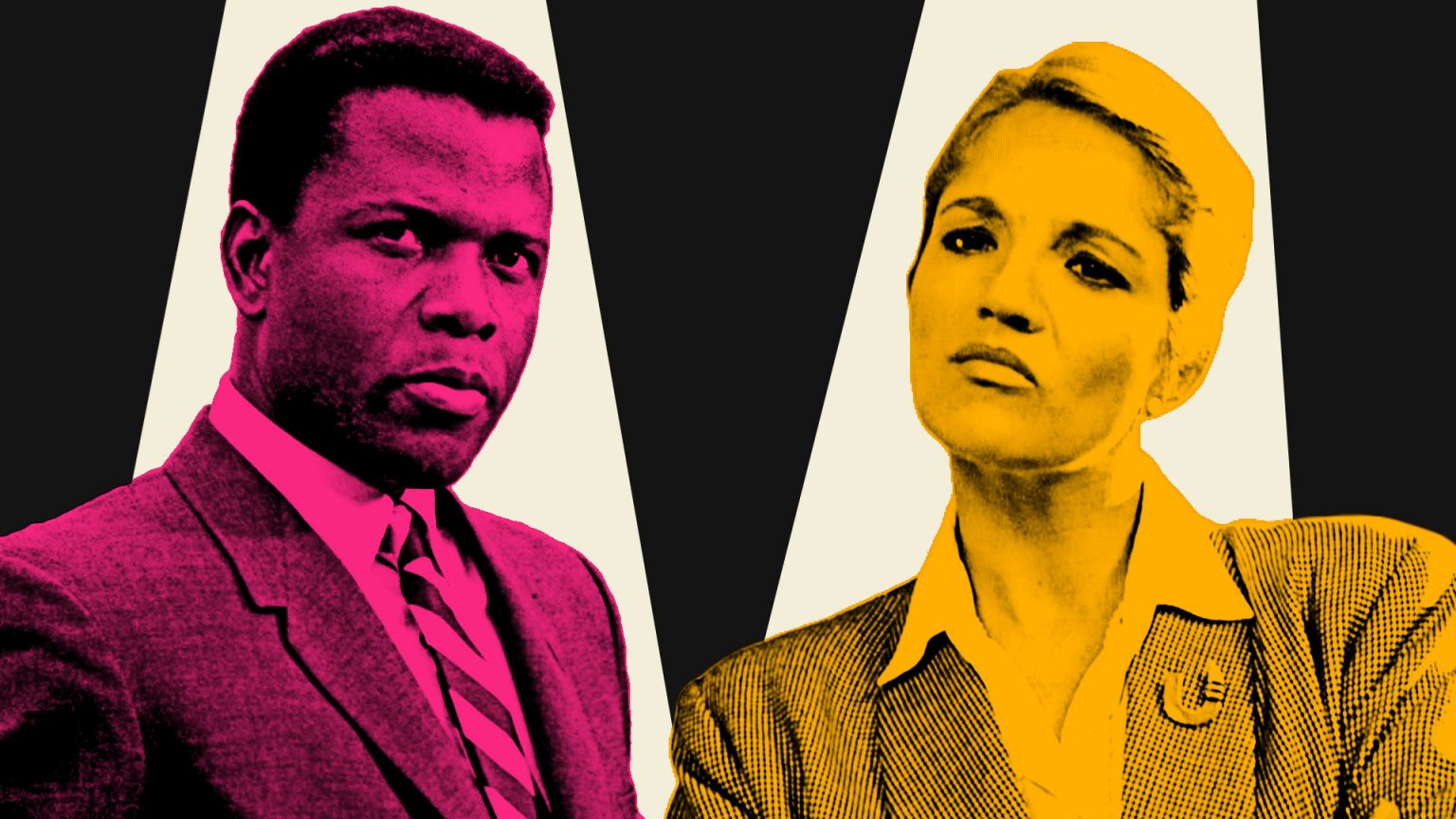At the intersection of genre and social commentary, film noir (and now neo-noir) has served as a particularly rich niche for exploring the dark side of American life. Marked by its fatalism, stylized aesthetics and dialogue, and criminal milieu, some of the greatest films of all time — including Out of the Past, Double Indemnity, and Blade Runner — fit into the genre. Using the conventions of noir, two new additions to the Fandor library, The Big Easy and In the Heat of the Night, explore the tension between the real and imagined American South.
The Big Easy is a crime-thriller released in 1986, directed by Jim McBride, and starring Dennis Quaid (as Remy McSwain) and Ellen Barkin (as Anne Osborne). Set in New Orleans, it centers on a corrupt cop’s love affair with the assistant district attorney. As their lust deepens, they uncover a deep mystery that concerns both gang violence and police corruption.
In spite of being shot on location, The Big Easy feels like it was made on a soundstage, embracing an artificial production design. It does not feel or sound like New Orleans so much as it feels like a purposeful attempt to conjure a romantic vision of the city. With quick-paced dialogue and exaggerated music and visuals, the film is larger than life as it explores the grey line between good and evil. Through its film noir lens, The Big Easy reaches for a lost nostalgia, yearning in part for a world that likely only ever existed on-screen.
In the Big Easy, there is an unease in the relationship between the real and artificial world. This is evident not just in its visual aesthetic, which leans heavily towards alligators and voodoo, but in its story and themes. Notably, the film’s treatment of race feels as though it’s from an uncritical older era, as it easily reduces its black characters to stereotypes while also positioning a corrupt cop as its anti-hero.
In one sequence, the straight-laced Anne tries to stop a mugging. She is violently pushed to the ground by two black men, and a gun-wielding Remy jumps in to save the day. He violently pushes his gun to the temple of one of the unarmed men, calling him a scumbag.
It’s a moment that serves as an essential reminder that the real or perceived crimes committed by black characters on-screen, as in real life, are often used to justify disproportionate violence. As part of a larger, romantic portrait of New Orleans, this moment stands out as an expression of what the South looks like from the point of view of white filmmakers. The use of film noir becomes a mask to shield the filmmakers from a critical appraisal of their treatment of race in a more modern era.
Even though it’s a couple of decades older, on the surface Norman Jewison’s In the Heat of Night, which is set in Sparta, Mississippi, feels a lot more modern than The Big Easy. In it, a black police officer from Philadelphia, Virgil Tibbs (Sidney Poitier), becomes unwillingly drawn into a homicide investigation. Every step of the way, he encounters racism in both its subtle and overt forms.
Compared to the broad artifice of The Big Easy, In the Heat of the Night seems far more rooted in reality and naturalism. Characters are ugly, sweaty, and eccentric. Cigarette-stained paint chips off the wall, neon signs advertise Coca-Cola, and swarms of flies cover the pies.
The nature of its politics feels more authentic as well; the realities of small-town life feel more lived-in. It does not seem unreasonable that a small-town sheriff would be willing to take on a black homicide detective because his racism is shown as a function of his paltry resources and lot in life. The film’s construction and editing appreciate that the verbal and physical violence leveled at Tibbs exists on a continuum with the mild repulsion and the gentle patronizing tone of more “open-minded” characters.
Despite this, In the Heat of the Night is also fantasy. Poitier’s intelligence, and the beauty of his pursuit of justice, are rendered as so pure that he is able to make a racist police chief reconsider his politics. James Baldwin lampoons that weight in I Am Not Your Negro, as he imagines the pair’s final meeting as a romantic embrace; it’s a prospect that seems absurd, but it’s also one that is no less unbelievable than a single interaction between a great black man and a racist cop “solving racism” in America. The underlying message seems to be: Be more than perfect and white people might tolerate you. That’s a bleak and, frankly, insulting promise.
That isn’t to say either of these films aren’t beautiful and stirring; they often are. Reflecting on their aesthetic and thematic contributions, the films have rightfully earned appreciation, but that does not mean they are above reconsideration and reinterpretation. Both The Big Easy and In the Heat of the Night are fascinating and engaging films about the American South, but there are, undeniably, problems with their interpretation of history and culture.
Watch Now: Southern noirs The Big Easy and In the Heat of the Night, now on Fandor for a limited time. Also, check out our neo-noir Spotlight!




